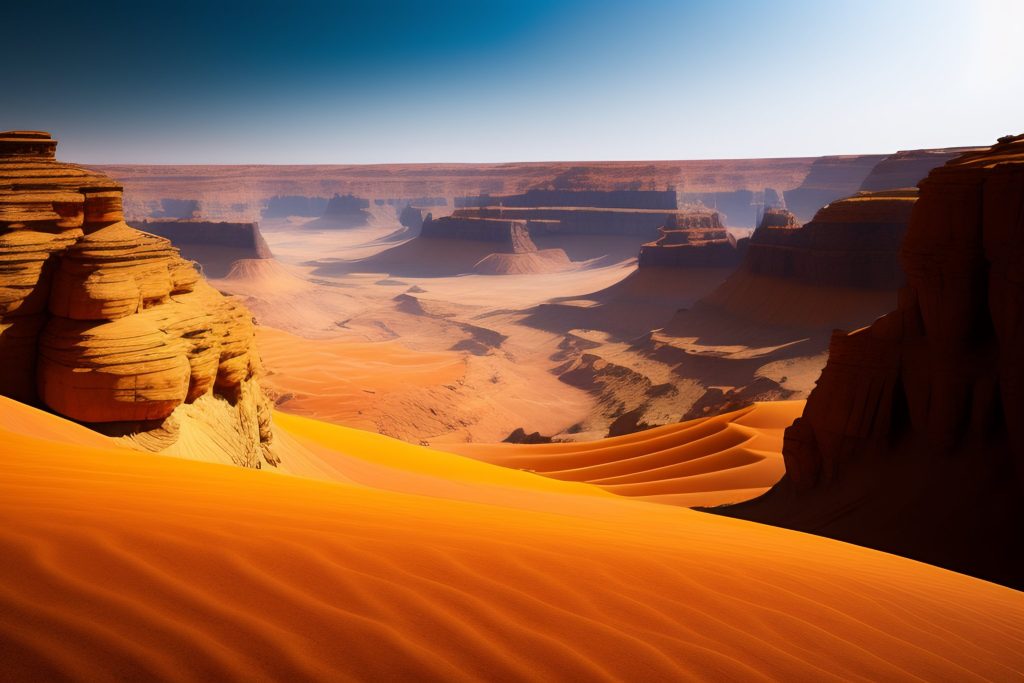Deserts, with their vast, unending landscapes and unique ecosystems, offer some of the most fascinating and challenging environments for travelers. If you’re planning a trip to a desert, it’s crucial to be well-prepared and informed to ensure a safe and rewarding experience. This comprehensive guide will provide practical tips for traveling to deserts.
Understanding Desert Characteristics
Before delving into the practical tips, it’s crucial to understand the characteristics of a desert to prepare effectively.
Extreme Weather Conditions
Deserts are well-known for their extreme weather conditions. They can be blisteringly hot during the day and chillingly cold at night due to the lack of moisture in the air to retain heat.
Minimal Vegetation and Wildlife
Due to low rainfall, deserts have minimal vegetation. Wildlife is also scarce but incredibly adapted to the harsh conditions. The sight of an occasional camel, desert fox, or cacti can be quite exciting!
Dramatic Landscapes
From the endless sand dunes of the Sahara to the rocky Atacama desert, each desert presents its own unique and dramatic landscape. Understanding these characteristics helps tailor your preparation and expectations.
Preparing for Your Desert Adventure
Now that you understand the basics of what to expect from a desert environment, let’s talk about preparation.
Research the Specific Desert
Not all deserts are alike. Research the specific desert you plan to visit. Look at the average temperatures during your visit, check for local flora and fauna, and understand any potential dangers.
Choose the Right Time to Visit
Many deserts are more accessible and pleasant during specific times of the year. The shoulder seasons (spring and fall) often provide milder temperatures and fewer crowds.
Plan Your Route and Share It
Plan your route meticulously and share your plans with someone not traveling with you. In case of emergencies, it’s essential that someone knows your expected whereabouts.
Packing Essentials for Desert Travel
Packing for a desert trip involves more than just a lot of water and sunscreen. Here are the essentials.
Appropriate Clothing
Pack lightweight, long-sleeved clothing to protect your skin from the harsh sun. For the cooler nights, pack warm layers. Include a wide-brimmed hat, UV-protective sunglasses, and a bandana or scarf to protect your face from wind and sand.
Hydration and Nutrition
Water is crucial, but you’ll also need electrolytes to replace the salts you’ll lose through sweat. Bring high-energy, non-perishable snacks for sustenance.
First Aid Kit
A well-stocked first aid kit is essential. Include bandages, antiseptic wipes, pain relief medication, and specific medicine if you have a known medical condition.
Navigation Tools
Dependable navigation tools, such as a compass and maps, are crucial in a desert environment where landmarks can be few and far between. Even with the advent of GPS technology, it’s wise to carry traditional navigation tools as a backup.
During the Journey
Once you’re in the desert, you need to put your preparation into practice.
Stay Hydrated and Protected
Drink water and electrolytes regularly, even if you don’t feel thirsty. Apply sunscreen liberally and often, wear your hat and sunglasses, and use your scarf to shield your face when needed.
Conserve Energy
In the desert, it’s crucial to conserve energy. Travel at a steady, sustainable pace and rest during the hottest part of the day, if possible.
Leave No Trace
Remember, the desert is an ecosystem, and many are protected areas. Follow the ‘Leave No Trace’ principles: pack out what you pack in, don’t disturb wildlife, and respect the natural environment.
Safety Measures
Finally, safety must always be paramount when exploring a desert.
Don’t Travel Alone
Traveling in a group or with a guide increases your safety. If something goes wrong, you’ll have someone to assist you, or at least seek help.
Stay Alert
Keep an eye out for dangerous wildlife, changing weather conditions, and your own physical condition. Heatstroke and dehydration can come on quickly in the harsh desert environment.
Emergency Plan
Have a plan in case of emergencies. This might include knowing the local emergency numbers, having a satellite phone, or carrying an emergency locator beacon.
Conclusion
Desert travel can be an unforgettable experience if you’re well-prepared and respectful of the environment. These tips are intended to help you prepare for a safe and enjoyable desert adventure, so don’t forget to take them into account before embarking on your journey. The desert is a challenging and inspiring landscape, and with the right preparation, it can also be a wonderful travel destination.
Read More
Tips for Hiking and Camping: The Splendor of the Great Outdoors

